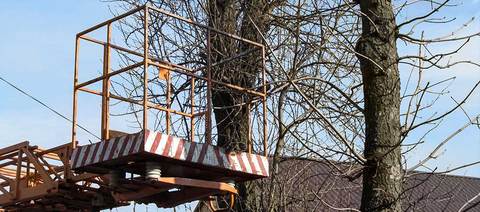MEWP Safety
When to use a MEWP
MEWPs are one of the safest means to provide temporary access to work at height. As a guide, if your task would require staying up a leaning ladder or stepladder for more than 30 minutes at a time, it is recommended that you consider alternative equipment. The Work at Height Regulations (WAHR) 2005 impose an obligation to follow a simple hierarchy of controls when planning and selecting equipment for work at height. Collective protective measures always take priority over individual protective measures - a practical example being that is preferable to provide two window cleaners with a MEWP or a cradle rather than asking them to work suspended and secured by personal protective equipment.Common hazards when using a MEWP
Most fatal and serious injuries involving MEWPs arise from the following safety issues:
- Entrapment ie: the operator getting trapped between part of the basket and a fixed structure.
- Overturning
- Falling
- Risky Behaviour
- Weather
- Handling Materials
- Collision
Why carry out a Pre-Use Inspection?
To stay safe and get the best performance out of your MEWP, it is vital to ensure the equipment is fit for purpose before every use. Maintaining and servicing access equipment will prolong its life and is required to meet health and safety regulations. A pre-use inspection should be carried out every day and all staff should be briefed on what they need to do. These checks will confirm that the machinery is safe to operate and identify if a faulty machine should be taken out of service.
Remember even if you are hiring the access equipment from a reputable firm, as an employer you are responsible for the health and safety of the people using it, so it is important to carry out your own checks as well as those done by the supplier.
What things should my pre-use inspection check?

Before carrying out a pre-use inspection you must ensure you are trained in the type of MEWP about to be used and are familiar with the specific model.
Your pre-use checklist should cover the following areas
Controls – Test all lift controls before any people or equipment are raised from the ground. This should include cutout switches and emergency stop mechanisms.
Hydraulic fluid and petrol – The oil level in the tank should be full when the platform is on a level surface and there should be enough fuel in the tank to complete the job.
Maintenance – Check the vehicle for any signs of damage or age which might cause it to malfunction. This should include identifying damaged or loose hoses or fittings, rust, corrosion, holes and electrical faults.
Stability – For a mobile access platform, the brakes of the vehicle should be fully functional. The base of a powered access platform needs to be locked into position before the platform is extended or elevated. Check all stabiliser legs and extendable parts are operational before use.
Documentation - Check that the manufacturer’s operating manual is on the machine and the date of the mandatory service examination is valid.
This check should be recorded for a number of reasons:
- It demonstrates operators are carrying out the checks
- It gives a maintenance and operational history of the equipment
- If faulty it lets the repair engineer know where the problem lies
- If there is an accident it gives a documented safety history of the equipment making it easier for you and an external auditor to determine if their was a safety shortcoming
In addition to a regular pre-use safety inspection check, a MEWP must be thoroughly examined at least every six months by a competent person or in accordance with an examination scheme drawn up by such a competent person.
What if the MEWP is faulty?
If you spot a fault which compromises the safety of the MEWP, you must isolate the machine, clearly tag the MEWP as being unsafe for operation and report the fault as per your internal process. Never operate a faulty MEWP.
Rescue Plans
The International Powered Access Federation (IPAF) advises that a clear rescue plan must be in place before using the MEWP. A rescue plan will include all the actions required to recover the platform in the case of machine malfunction by using the auxiliary controls, and equally importantly how to operate the MEWP from the ground in an emergency. Always check the manufacturer’s recommendations when setting out a protocol for emergencies and devising your rescue plan.

